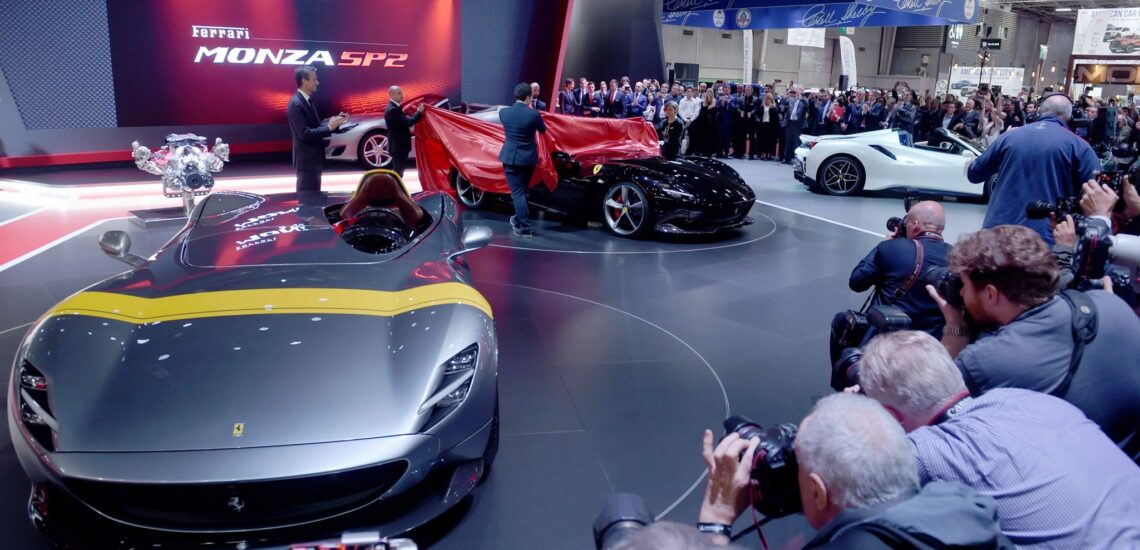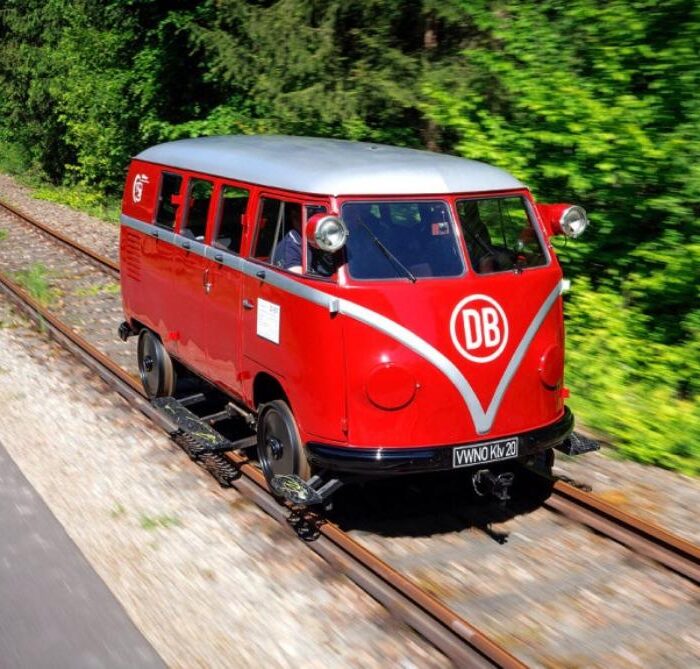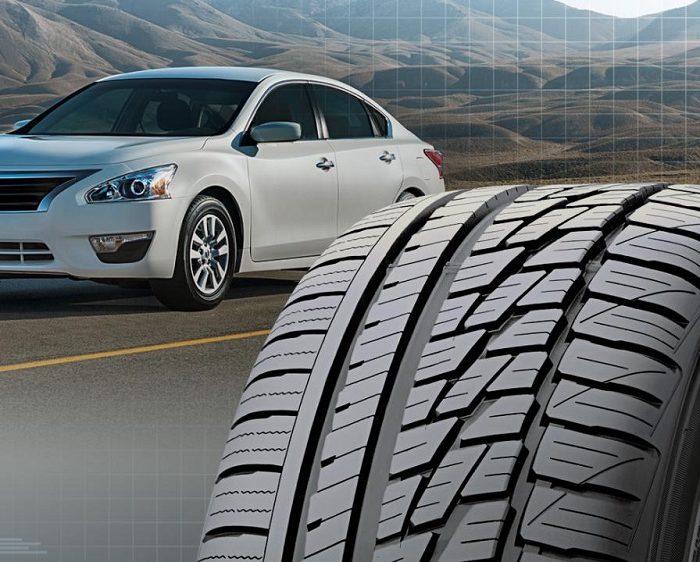As soon as the Golden autumn season begins, the famous Paris Motor Show opens at the very beginning of October at the Paris Expo in Porte de Versailles. Though it does not happen every year, only in even-numbered years. The Paris Motor Show is the ancestor of all the world’s automobile shows. It is considered the first in the world since its opening in 1898. People say this motor show with new cars and concept debuts is one of the most significant. In this article, we are going to tell you the most interesting thing about it since the Paris Motor Show is a live show where every visitor can be an active participant.
The glorious history of the Paris Motor Show
The motor show historians describe the exhibition in Paris as the first full-fledged world auto show. Back in 1894, at the Salon du Cycle exhibition, they tried to exhibit two cars, but at that time there were about twenty cars in the whole of France, thus, there was no sense or benefit from that exhibition. A year later, the Paris-Bordeaux race took place, and the cars that participated in it were invited to a performance in the Central Park of Paris. The Automobile Club of France, already existing at that time, decided to host a show. The initiator of such an exhibition was one of the pioneers of the automobile industry, the French automobile pioneer Marquis Jules-Albert de Dion. French President Felix Faure was skeptical about the future of “self-driving carriages”, but attended the event (while arriving and leaving in a horse-drawn carriage, which caused a scandal). On June 15, 1898, in the Tuileries garden opposite the Louvre, the audience saw a small number of cars which to prove their right to participate in the motor show, had to travel a forty-kilometer path from Versailles to Paris. In three weeks, more than 140 thousand visitors came to see 269 exhibits — all that the European car factories of that time like Peugeot, Panhard & Levassor, and Daimler-Benz could show. And many of them just out of curiosity — to find out how the carriage can move without a horse, and whether it is indeed possible. The next year, in 1899, the Paris Motor Show attracted twice as many curious people. The absolute attendance record at the Paris Motor Show was set in 1992 when 1,118 million people came to see the latest discoveries of the new season.
However, at the turn of the XIX-XX centuries, public opinion on a car as a means of transportation remained biased and full of skepticism. In 1901, the Paris Motor Show moved to the gorgeous exhibition center — “Grand Palais” which was built in 1897 for the world exhibition. The area of 6 thousand square meters encompassed 220 cars as well as motorcycles, boats, and even balloons. It was the “Grand Palace” that became the home of the Paris Motor Show for the next 60 years. It was only in 1962 that the salon moved to its current apartments, an even larger exhibition complex at the gates of Versailles on the outskirts of Paris.
It was Paris where the most important achievements of the automobile industry were first demonstrated: the automatic carburetor in 1904, the disc clutch in 1905, and the shock absorbers in 1906.
The exhibition of 1910 was significant in that it was organized not by an amateur French automobile club, but a professional Association — the Trade Union organization of automobile designers. However, visitors to the motor show did not notice this transformation. They took more interest in the American Ford, which for another two decades has been gathering the largest number of curious people at its stands.
By the way, until 1913, the Paris automobile exhibitions were held in the fall, not summer.
By 1919, the number of participants in the show reached 664, in the same year, the Citroen exposition Citroen was particularly large-scale — 50 cars. Moreover, American automakers presented their mass models. Until 1922, all the car manufacturers available at that time were at the disposal of the Paris Motor Show, which later under the influence of the French language became known as Salon de l’auto (Salon De l’auto).
Like other world motor shows, the Paris show took time out for the duration of the war. From 1915 to 1918, the salon was not held due to WWI. The 1946 Motor Show was the first major event in Europe after WWII. Any peaceful event at that time was met with great enthusiasm. For ten days, the exhibition was visited by about 810 thousand people (twice as many as at the previous motor show in 1938).
All the post-war years were a presentation of the products of the American automobile industry since the car factories in Europe were left in ruins. Gradually, European automakers began to accumulate strength, and at the turn of the 50s, the sensational Citroen 2CV was born. Much later, it will be called “tin can” — due to its dull design and simplicity of construction. But it was with him that the mass European automobile industry began.
In 1952, the Paris Motor Show started to change its profile from presentation to entertainment. This was the first motor show with a girl on the stand. In 1954, the number of visitors reached one million. In 1957, a Japanese car — the Prince (Nissan) Skyline was first exhibited at the international motor show. The Jaguar E, shown for the first time at the 1961 Paris Motor Show, defined the look of luxury cars for several decades to come.
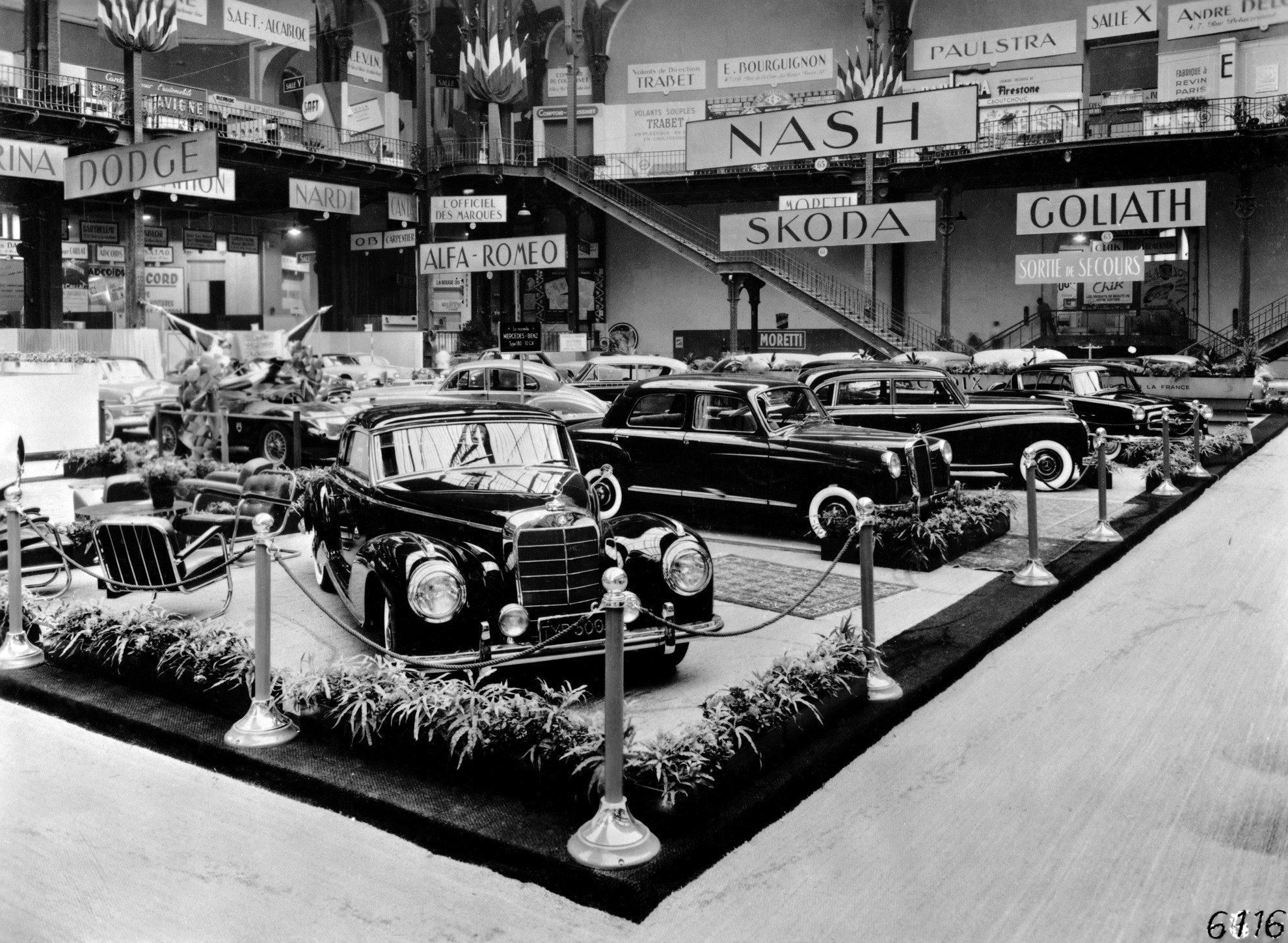
Since 1976 the Paris Motor Show was held every two years, every even year, so since 1990, the autumn Paris salon did not intersect with the autumn motor show in Frankfurt, held until 2019 every odd year, which allowed all major automakers to plan the premieres of the next model year, without being torn into two sites in Europe.
The Paris automobile salon got its current name in 1919. It was after this that all car presentations in Europe and the world started to be called salons.
In 2016, the Paris Motor Show welcomed 1 million 200 thousand visitors, which made the most visited car show in the world of that time, ahead of Tokyo and Frankfurt. The key figures of the show were: 125 thousand m² of exhibition space, 8 pavilions, 260 brands from 18 countries, 65 world premieres, more than 10 thousand test drives for electric and hybrid cars, more than 10 thousand journalists from 103 countries.
Always in Paris sought to get all the best, the newest that created the idea of automobile designers. Therefore, it is not an exaggeration to say that the history of the Paris Motor Show is the history of the car itself.
The best presentations of the Paris Motor Show, or how the legendary models appeared
In 1922, the first car designed for women was presented at the Paris automobile exhibition. This was the Citroen Type C, also known as the 5CV. The four-cylinder 0.8-liter gasoline engine that develops 11 horsepower, Solex carburetor, magnetic ignition, small size — 3.2 meters in length with a wheelbase of 2.25 meters. In addition to compact dimensions, the Citroen Type C had quite an important advantage — an electric starter, which greatly facilitated the operation of the fair sex. And the front and rear suspension had elliptical quad springs, so the car was quite comfortable. In 1924 The Citroen Type C was renamed the C2, and in 1925 an extended version of the C3 was released. But, despite the fact that the world’s first “female” car was clearly ahead of its time, sales of the model left much to be desired, and in 1926 the production of the Citroen Type C was discontinued. However, Paris did not remember this.
In 1936, the showroom showed a Fiat 500 Topolino (“Mouse”). The funny little car, which was only 3.2 m long, 1.2 m wide, and 1.3 m high, was equipped with a 0.6-liter engine with 13 HP. The Fiat 500 Topolino could accelerate up to 85 km/h, however, an ordinary driver did not ask for more at that time! After all, the main thing is that with its data, the car consumed only 6 liters of fuel per 100 km of travel and cost slightly less than 10,000 Lira. This model “potbellied trifle” was a resounding success since the Fiat 500 Topolino became one of the symbols of Italy, including — thanks to the “Roman Holidays” movie, released after the war, in 1953.
In 1946, in Paris, the Renault 4 CV was presented, which three years later became the most popular car in France, and in West Germany, this model took second place among imported foreign cars. The monocoque body, rear-engine layout, rear-wheel drive, 0.8-liter engine, and three-speed manual transmission were considered advanced solutions for the middle of the XX century, and it was not about the most expensive car model.
The Citroen 2CV, later dubbed the “Ugly duckling” and first shown in Paris in 1948, had only a 9-horsepower engine and a very strange design. But this car went, moreover — in addition to its economy and simplicity, the Citroen 2CV was quite spacious and had a good smoothness of movement. The result is over 3.9 million copies sold and love throughout France.
In 1949, the first “road” car Ferrari was presented in the French capital — prior the company produced racing cars. The Ferrari 166 Inter coupe with the bodywork of the Milan Atelier Carrozzeria Touring was equipped with a 1.5-liter V12 engine with three carburetors. The engine developed power from 110 to 140 HP at 6000 rpm.
The Citroen DS, famous for the Fantomas movies, was shown at the Paris Motor Show in 1955. The car was presented at 9 a.m. local time, but at 9:45 the French received 749 orders for a new car, and by the end of the day — 12 thousand. The car had a high landing and a large glazing area, an unusual wing shape, and round headlights. Even with its appearance, the Citroen DS inspired respect — the French immediately dubbed the model “goddess” (the letter combination DS sounded like the word Déesse). Under the hood of the Citroen DS was a 2.0-liter four-cylinder engine with a two-chamber carburetor, developing 75 HP. There were also such technical innovations as a unique hydro-pneumatic suspension, rack-and-pinion power steering or a special brake pedal. It is not surprising that in the instructions, the creators advised careful rotation of the steering wheel due to accurate reactions, as well as careful use of the brakes due to the high pedal responsiveness.
In 1966, Lamborghini Miura models were shown at the Paris Motor Show, and two years later — the Alfa Romeo Carabo concept by designer Marcello Gandini (Atelier Bertone). In 1968, the first front-wheel-drive Fiat debuted — the Fiat 128 model, which was recognized as the car of the year in 1970 in Europe.
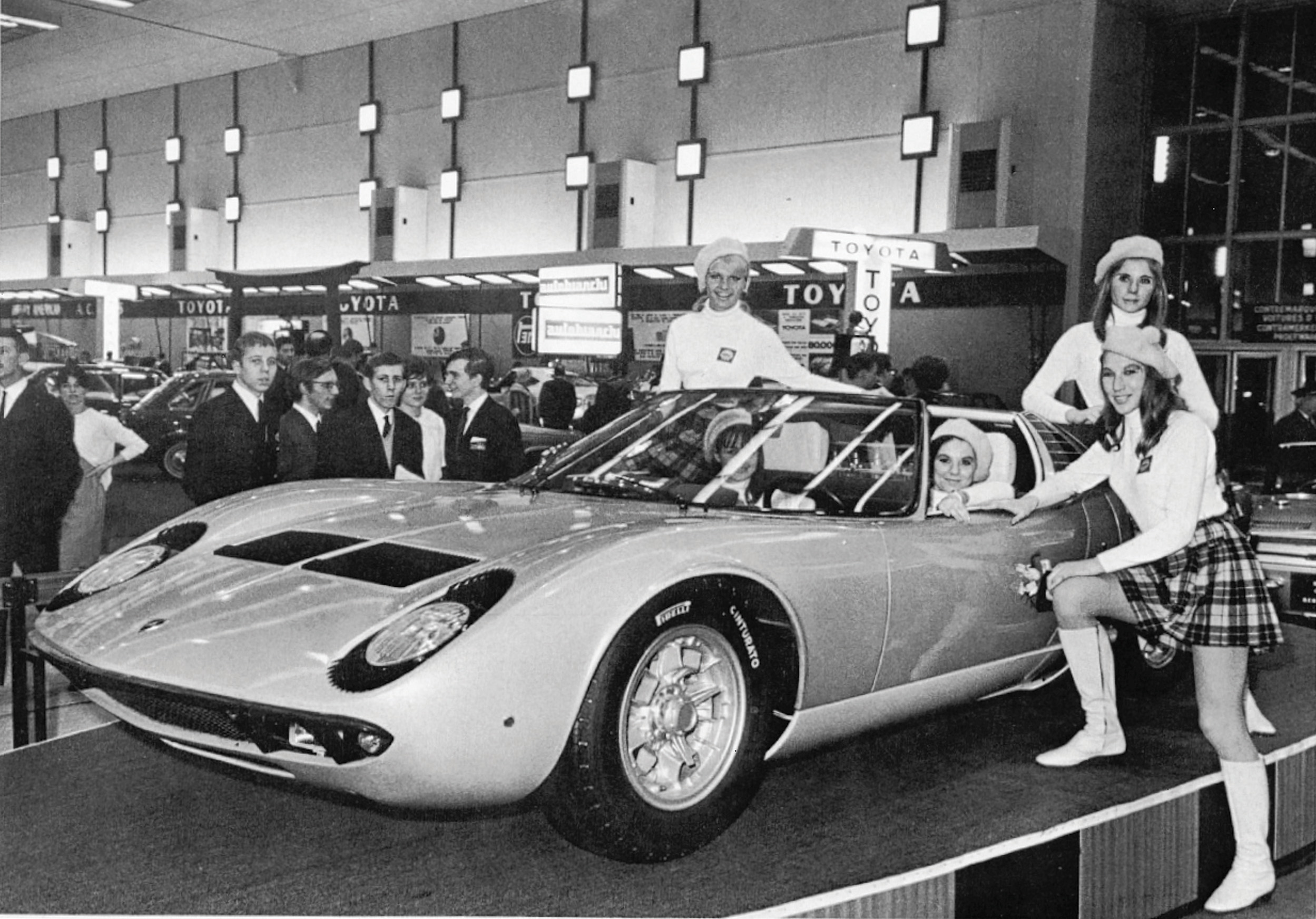
In 1972, at the Paris Motor Show, BMW introduced an unusual concept — the E25 Turbo. This car was built exclusively as a show car.
Under the hood, it had a 2.0-liter engine that developed 280 horsepower thanks to turbocharging. This solution at that time seemed no less fashionable than the wing doors that extend from the hood of the headlights or the ultra-modern cockpit, resembling a ship. The concept Roadster Renault Laguna was among the novelties of Paris in different years, introduced in the era of biodesign in the early 1990s. The French company uses its name for mid-size sedans and station wagons.
We hope that you liked the article about the Paris Motor Show. If you have not yet obtained an international driver’s license, we invite you to quickly and easily apply for an international driver’s license on our website.

Published November 05, 2020 • 9m to read

